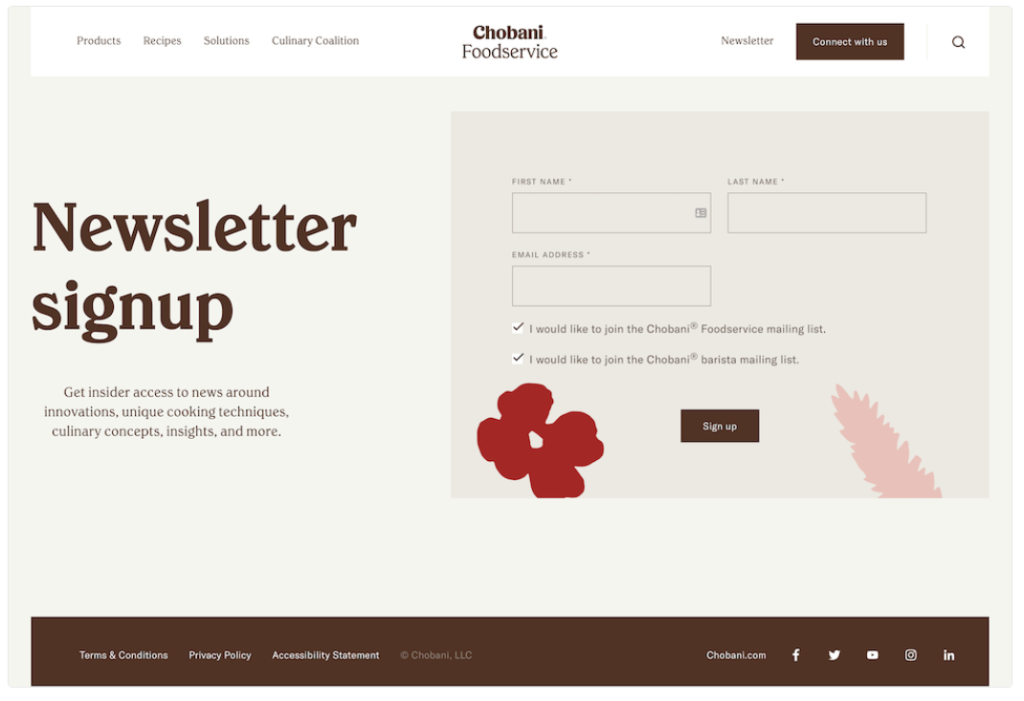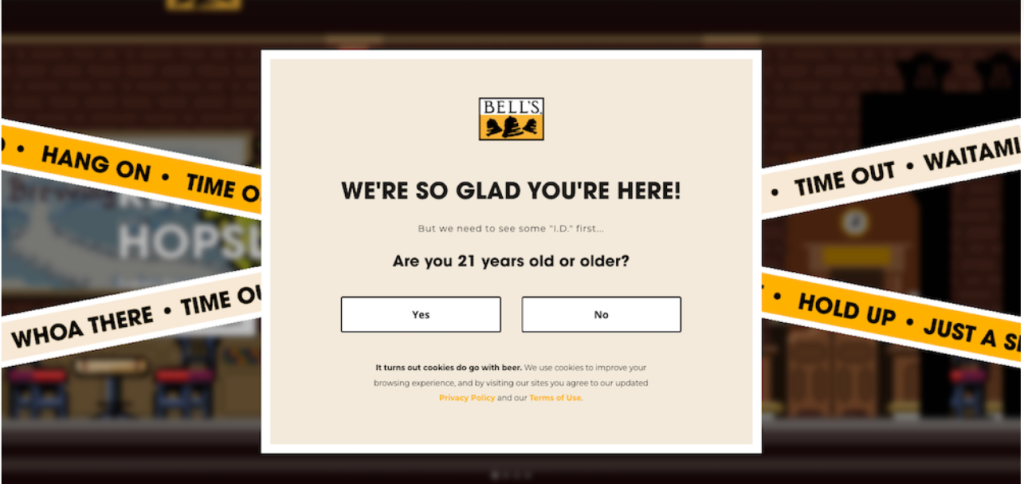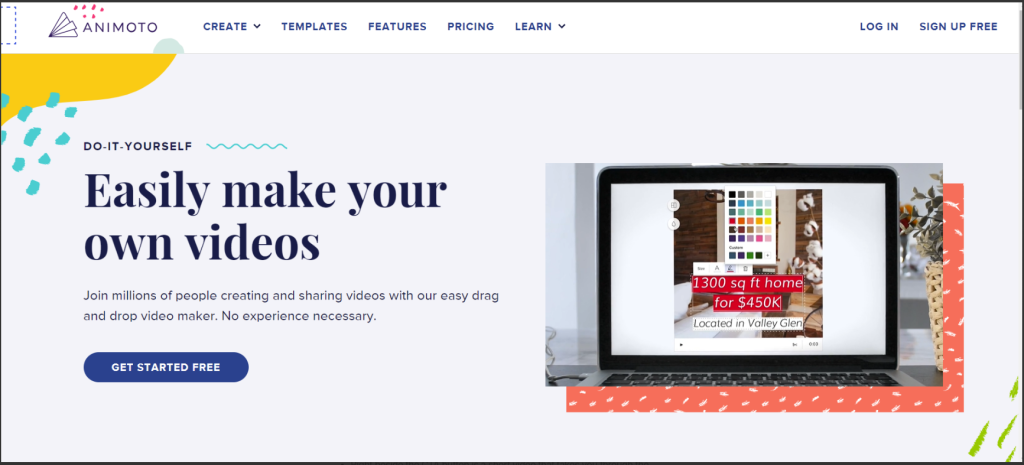Did you know that businesses see a 55% increase in leads when using landing pages? A landing page is a focused web page designed to convert visitors into leads or customers. It’s a crucial tool in digital marketing, guiding users toward a specific action like signing up or making a purchase. Let’s discover more about what a landing page is and various types of landing pages.
What’s a landing page?
A landing page is a standalone web page created specifically for marketing or advertising campaigns. It is designed with a single goal in mind: to encourage visitors to take a specific action, such as filling out a form, subscribing, or making a purchase.
For example, an e-commerce store might use a landing page to promote a seasonal sale. This page would focus on showcasing discounted items with a clear call to action (CTA) like “Shop Now” and other landing page elements to drive conversions.
Purpose of a lading page
Why do I need a landing page? Why does it exist? Let’s find out the answers below:
- To generate leads by collecting contact information
- Drive sales through focused promotions
- Encourage email subscriptions
- Promote a new product or service
- Guide users toward a specific action (e.g., booking a demo)
- Improve conversion rates with targeted messaging
- Test marketing strategies using A/B testing
How a landing page differs from other webpages?
Landing pages are crafted to achieve a specific marketing goal, such as driving conversions or capturing leads. Unlike regular web pages, they focus on a single action with minimal distractions.
| Aspect | Landing Page | Other Web Pages |
| Focus | Single focused goal or CTA | Multiple goals and content |
| Navigation | Limited or no navigation options | Full site navigation |
| Design | Simplified, conversion-oriented | Broader design with multiple sections |
| Content Length | Short, concise, and direct | Longer, more detailed information |
| Target Audience | Specific, campaign-driven | General audience |
| Conversion Optimization | Highly optimized for conversions | Not always optimized for specific actions |
| Entry Point | Often accessed through ads or marketing links | Can be accessed through search engines or browsing |
Different types of landing pages
Landing pages come in various forms, each tailored to specific marketing objectives. Whether capturing leads, promoting sales, or encouraging clicks, these pages serve unique purposes. Understanding the different types helps businesses choose the best approach to drive desired outcomes.
Squeeze Page
A squeeze page is designed specifically to capture email addresses or other contact details from visitors, often by offering something valuable like a free ebook or discount. It focuses on limiting distractions, with minimal content and a strong call to action.
For example, a fitness brand might use a squeeze page to offer a free workout guide in exchange for an email address. This helps them grow their mailing list for future marketing efforts.

Features:
- Minimalist design focused on the form
- Clear and compelling headline
- Irresistible offer or incentive
- Strong call to action (CTA)
- No navigation or distractions
Lead Generation Landing Page
A lead generation landing page collects information such as names and email addresses from potential customers, usually in exchange for an offer like a free trial, consultation, or e-book. These pages focus on converting visitors into leads by capturing details through a form.
A lead generation page may often be confused with a squeeze page. The difference is simple – a lead generation page collects more detailed visitor information, while a squeeze page focuses solely on capturing email addresses with minimal content.
For example, a software company might use a lead generation page to offer a free trial of their product. Visitors submit their contact information, which can later be used for follow-up marketing or sales outreach.

Features:
- Simple form to collect visitor details
- Clear value proposition for the visitor
- Prominent call to action
- Trust indicators like testimonials or case studies
- No unnecessary navigation links
Splash Page
A splash page is a short, introductory page that visitors see before entering a website. It often includes a simple message, announcement, or promotion, with the goal of grabbing attention. These pages usually require the visitor to take an action to proceed to the main site.
For instance, an online fashion store might use a splash page to announce a seasonal sale and offer a discount code. The page would direct users to click through to access the main website and start shopping.

Features:
- Brief, attention-grabbing message
- Eye-catching visuals or design
- Clear button or CTA to proceed
- Often used for announcements or promotions
- Optional content like language or age verification
Click-Through Landing Page
A click-through landing page is used to warm up visitors before directing them to another page, usually for purchasing or signing up. It presents enough information to interest users and includes a strong call to action, encouraging them to continue through the sales funnel.
For example, an e-commerce store may use a click-through landing page to explain the benefits of a product, and then provide a button that directs users to the checkout page to complete their purchase.

Features:
- Engaging and persuasive content
- Clear CTA button leading to a purchase or signup page
- Simplified design focused on driving clicks
- No form on the initial page
- Often used for ecommerce or software products
Long-form Sales Landing Page
A long-form sales landing page is designed to provide detailed information about a product or service, convincing visitors to make a purchase. These pages typically include a compelling story, benefits, testimonials, and multiple calls to action spread throughout the page.
For instance, a health supplement brand might use a long-form sales page to highlight the benefits of their product, share testimonials, and showcase research backing their claims, followed by multiple opportunities to buy the product.

Features:
- Detailed product information and benefits
- Multiple CTAs throughout the page
- Persuasive storytelling or case studies
- Testimonials and reviews for social proof
- Visual elements like images or videos
Importance of a landing page
A well designed landing page can significantly add value to the business. Let’s see how:
Lead generation:
A landing page helps businesses capture valuable information from potential customers through forms. This data can be used to build an email list, generate leads, and nurture prospects into clients through personalized marketing strategies.
Higher conversion rates:
Landing pages focus on a specific action, like signing up or purchasing, which improves conversion rates. By eliminating distractions and presenting a clear call to action, users are more likely to complete the desired task, boosting overall campaign success.
Effective marketing campaigns:
A well-designed landing page enhances marketing campaigns by aligning content with specific goals. Whether promoting a product or event, it channels user attention towards one objective, resulting in more impactful and measurable outcomes for businesses.
Valuable testing opportunities:
Landing pages allow businesses to perform A/B testing to optimize content, design, and calls to action. These insights help improve future campaigns by identifying what works best for different target audiences and adjusting strategies for higher success rates.
Reduced bounce rates:
Landing pages keep visitors focused on one clear message or offer, reducing distractions. This results in lower bounce rates and ensures users stay on the page longer, increasing the chances of converting them into leads or customers.
Higher ROI on advertising:
A targeted landing page maximizes the return on investment for paid advertising campaigns. When users are directed to a relevant, action-oriented page, they are more likely to engage, making the cost of ads more efficient and impactful.
Increased brand credibility:
By delivering relevant, streamlined content, landing pages build trust with users. A professional and focused page reflects the business’s understanding of customer needs, which enhances credibility and encourages long-term relationships with potential clients.
